Turning lemons that life gives you into lemonade is much easier said than done but in this highly enlightening interview with former banker, Dotun Akande, we learn from her heart warming story that it is indeed possible. Autism is a term that barely existed in the Nigerian lexicon twenty five years ago but thankfully, that has changed.
- Please tell us a little bit about yourself and your centre.
My name is Dotun Akande. I am the Director and founder of Patrick Speech and Language Centre and Pure Souls Learning Foundation.
And everybody keeps asking me, why the two? It’s because when we started Patrick’s, the intention was to have a centre where parents can come in and pay for the service to support their children with autism. But then we found out that there were a large number of families that could not afford the services. So we started Pure Souls Learning Foundation as an NGO that will support Patrick’s. So, that way we can take more families that struggle with finances to support their children in a home environment.
- What was your occupation before venturing into the area of autism ?
I studied economics at the University of Ado Ekiti and then I started working in the bank. I graduated in 1991 and started working in a bank that same year. I worked in various banks. Group Merchant Bank, I worked with Arab Bank, I worked in First City Merchant Bank (now First City Monument Bank), but I worked in the security section, that was City Securities Ltd. And then I ended my career in banking in Broad bank. That was where I gained all the knowledge of banking and use of economics which I used to support myself. So, I continued doing business which I had always done on the side but then decided to go into it fully. I opened a shop in Ikoyi and was selling children and lady’s wears.
- So, when did your centre for those with autism commence operation? Are you looking to have more centres?
The centre started out in 2006 and we’ve been running it since then. Thankfully, it has been growing. So, we started the centre first just to support families with therapies. We’ve been doing speech and language therapy, occupational therapy and behaviour modification. Then we added music movement. Then we went fully into sensory integration when we noticed that a lot of our children present sensory dysfunction, meaning they have challenges with different sensory modulations. So, we went fully into that and then we started to work with their area of need. And over time we started getting young adults. Those who were struggling in secondary school or even in primary school. Some of them couldn’t go further than primary one, and they just kept pushing them along the line. So, when they became quite old, the parents felt, oh, now they can’t go any further. So, they came here and then we started to have a young adults program and eventually we ventured fully into the adults program. We kind of progressed over time. And having a centre of over 50 families means that I must have about 30 members of staff. So, I’m not looking to open another centre. It’s tough enough to set up a centre and keep it running at a standard that one would like it to sustain over time. To be honest, opening another centre is not directly in our radar now because we just upgraded our centre to accommodate more families. So, that already puts pressure on us in terms of staffing, in terms of monitoring, and in terms of keeping our certification in place. So, we have to be a certified standard. We have to have that certification in place to help keep the standards and the quality that we deliver to families.
- What exactly is autism?
Autism is a developmental disorder that affects children. It starts from childhood. You don’t get autism at adulthood. It affects the area of speech and communication. And under communication, you have expressive language skill, ability to speak; you have receptive language skill, ability to understand; and then you have communication ability to converse, conversational skills, with peers or with adults, or to make requests and so on and so forth. Then in terms of behaviour, the children behave in a certain manner. They have odd behaviour. They are sometimes hyperactive. They look from the corner of their eyes, they steam. You have visual steaming, you have vocal steaming. That’s when you will hear them repeating things or a particular word over and over again. And then you have physical steaming where they steam with their hands. And then you have the area of social skills. They don’t play with other children. They struggle with turn taking and paying attention. They struggle with peer engagement, social communication and understanding. They struggle with non verbal languages. So, those are things that they struggle with. And then there is sensory dysfunction, which is a big part of autism. Now, when you say sensory dysfunction, a lot of them cover their ears to shut out noise. They sometimes have challenges with bright lights and then some of them don’t like to be touched or they unusually hug people. So, it’s either their sensory modulation is not functioning at par; sometimes it’s under-stimulated and sometimes it’s over-stimulated, depending on the individual. And autism is a spectrum. There are people that are at the lower end of the spectrum and then there are those that are at the high functioning end of the spectrum. We don’t like to use the term high functioning, but that is the way you can describe this. We prefer to say low, moderate, severe. We can put it in cadres, depending on severity and how affected the individual is or the nature of how the person is affected. It could be that the child is more sensory and has a lot more sensory needs than communication needs, and than behavioural needs. So, depending on the needs of the individual, you have to now do your assessments to know where to go from there.
- Thank you. That has actually pretty much answered my next question because I was going to ask if all autistic people are the same. Does it affect them all in the same way? But you have informed us now that it’s a spectrum. I was also going to ask what the tell tale signs are but you have answered that too. Okay, but is there a cure?
Oh, there’s no cure, but there’s management. So, you can manage them to a place where you wouldn’t even recognize the signs anymore. Yes. It doesn’t mean that the individual is no longer on the spectrum. It just means that he or she is now able to mask their difficulties. It’s like you and I. How when you go out to a party, you don’t expose all of yourself. So, they have learned to manage their behaviour and they are able to attain what we call self regulation. They can self regulate their system in different settings. So, with some of them, you can find that they don’t understand social cues or some of them just don’t socialise.
Of course, there are people that we would call introverts. And those ones too don’t socialise. And then for some of them, they will try too hard to socialise. So, you will notice that they are doing much more than they should. You can tell that something is not quite right, but they can walk through life. Some of them use language beautifully, some are orators. Some have splinter skills in certain areas. They say every child with autism has skills in a particular area but it is not necessarily true. But they learn. That’s the difference between them and others. If you teach them, they have the capability to rote learn, especially if it’s something that has to do with routine. You work with their routine day in, day out. They learn how to cope in such engagements or in such work program to the point that makes them not stand out. Once they know the social skills required in certain situations, they learn how to cope in those situations. And that’s what we call self regulation.
- Interesting. To be honest, I’m hearing a lot of this for the first time.
What led you to setting up Patrick Speech and Learning and how did you arrive at that name?
Alright. What led me to setting up Patrick’s is of course, my son, who was diagnosed at three, as we noticed he was struggling with language. The first thing we observed was that he wasn’t speaking and he had strange habits. One, he was drawing, then he used to suck from the corner of his mouth, then he used to line objects in a particular manner and then he used to paint. Different things came on at that time. So, when we eventually got the diagnosis of autism, we ran with it. And what we found out was that even though he wasn’t speaking, he was learning in school. So, he would be the best student in maths and be the best student in ICT. He would struggle with English and English language or anything that had to do with reasoning, anything that had to do with abstract. Also, anything that had to do with essay composition like “Tell us about yourself”. Where he had to be creative in the area of speaking or in this area of writing, he would struggle with it. So, we focused on the things he could do very well, and then we amplified that by allowing him to be engaged in other skills, such as music. We introduced him to playing the piano. We didn’t just say play the piano, we actually went and enrolled in music so he could follow the path to a place of excellence. Even though he now refuses to go anywhere near a piano…Lol. With that, we were able to get him to start speaking at the age of five and now he’s a maths genius. As for the name Patrick’s, it’s because he was born on St. Patrick’s day. So, that’s why we named the centre Patrick’s.
You can read the concluding part of this interview in the March edition



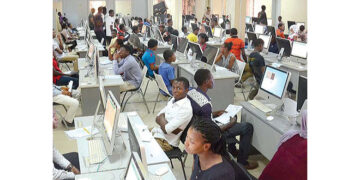



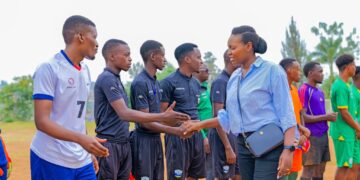

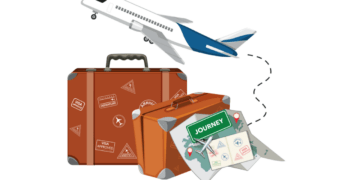










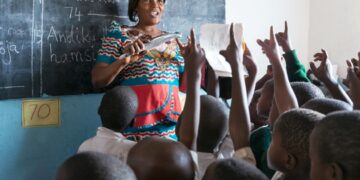

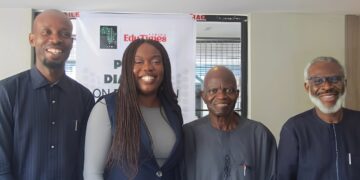






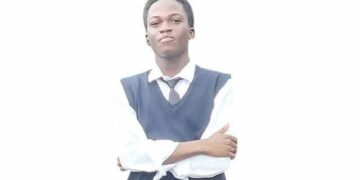



























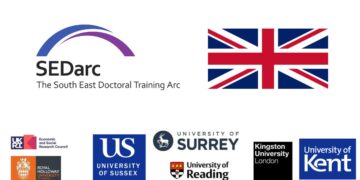



















 EduTimes Africa, a product of Education Times Africa, is a magazine publication that aims to lend its support to close the yawning gap in Africa's educational development.
EduTimes Africa, a product of Education Times Africa, is a magazine publication that aims to lend its support to close the yawning gap in Africa's educational development.

